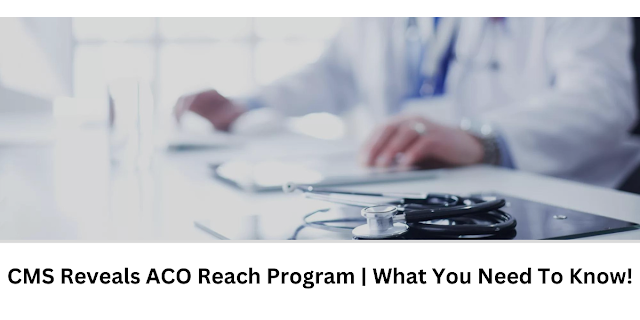CMS Reveals ACO Reach Program | What You Need To Know!
The healthcare landscape in the US is constantly evolving, and the CMS have recently unveiled a significant development - the ACO Reach Program. It marks the next evolution of Direct Contracting, a model aimed at enhancing the attractiveness of the program and focusing on health equity. Direct Contracting is part of CMS's strategy to transition away from fee-for-service reimbursement and towards value-based models. It seeks to improve the quality of care while reducing costs.
The Scrapping of the Geo Program
One of the most significant changes in the ACO Reach Program is the scrapping of the Geo Direct Contracting model. Originally launched during the Trump administration, the Geo model aimed to allow a wider range of risk-bearing entities to take on risk for patients across an entire market. However, due to complaints and concerns, the Biden administration decided to discontinue this program. This move has implications for organizations seeking to expand their presence in the Medicare Advantage market.
Launch of the ACO Realizing Equity, Access, and Community Health Model
The Program introduces the ACO Realizing Equity, Access, and Community Health model, set to launch in January 2023. This model emphasizes equity, access, and community health. Healthcare providers considering participation in this new model will need to plan strategically to adapt to its requirements.
Addressing Health Equity in the ACO Reach Program
One of the notable changes in the ACO Reach is the introduction of incentives to address health equity. CMS aims to incentivize ACOs to cover underserved communities and beneficiaries while avoiding penalizing them for doing so. This initiative involves making adjustments at the beneficiary level using dual-eligibility status and the University of Wisconsin Area Deprivation Index.
Adjustments at the Beneficiary Level
The dollars allocated at the beneficiary level can have a significant impact, potentially providing a $30 per beneficiary per month boost for underserved communities and a $6 per beneficiary per month adjustment for top decile beneficiaries. While this may only result in marginal changes for most ACOs, those with a high percentage of underserved beneficiaries may see more substantial adjustments.
Changes in Coding Intensity
CMS has introduced changes to the coding intensity limits, with adjustments to the 3% cap on changes to the population risk score. These changes can either provide more flexibility or limit it, depending on various factors. Understanding these modifications is crucial for healthcare providers participating in the program.
Reduction of Quality With hold
CMS is reducing the quality withhold from 5% to 2% from PY2023 through PY2026. This change aims to reduce the risk for ACOs with lower-quality performance while improving cash flow for providers.
Learn more about ACO Reach Program at Persivia. See how we support
healthcare industry with our cutting-edge heathcare models.


.png)
Comments
Post a Comment
Please do not enter any spam link in the comment box